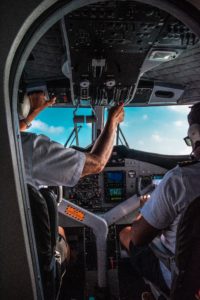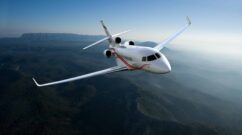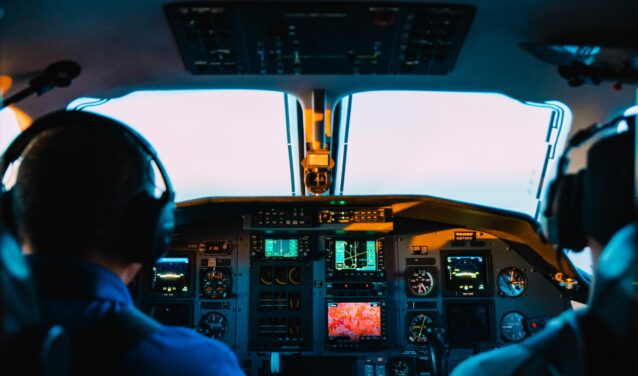Is there a pilot in the plane? Or rather two! It is true that we often see several pilots on a single plane in private jet but also in commercial aviation. So why this practice? What is the reason to have several pilots? Are there any exceptions? AEROAFFAIRES answers your questions.
An update on the legislation
First of all, it is important to distinguish between public and private transport. In business aviation, all aircraft operate as public passenger transport (it is not because they are private jet flights that they operate as private transport, the two terms must be dissociated). Airlines operating in public transport must also hold an Air Operator Certificate (AOC).
In private transport, the flight service cannot be commercialized and is therefore not governed by any prior authorization. Safety is therefore not guaranteed and the requirements of this mode of aviation are less supervised than with business or commercial aviation, which are highly regulated.
The impact on the number of pilots
Unlike most commercial and even private aircraft, there are business jets that are certified single-pilot. This means that only one person is able to control the aircraft. In the business aviation industry, the Pilatus PC-24, the Hondajet HA-420 or the Cessna Citation M2 are regularly certified single-pilot aircraft.
However, companies operating private jets are governed by public passenger transport legislation, so there must be two pilots in the aircraft, regardless of the type of jet! On the other hand, in private transport, as there are very few legislative constraints, it is possible to have only one pilot at the controls of single-pilot certified aircraft.
What do these 2 pilots do then?

Generally during a business jet flight, the 2 pilots have functions that complement each other. One is the captain, the main pilot, the other is his co-pilot able to relieve him at any time, but also to take in hand other side missions during the trip.
The main pilot is therefore in charge of the plane. He is responsible for his aircraft, as well as for the safety of the passengers and the crew.
The pilot has missions to fulfill before, during and after the flight. The co-pilot is there to assist him. These missions are as diverse as they are varied. From the flight plan, to the monitoring of the weather, to the technical supervision of the aircraft, everything is scrutinized. As a general rule, to become the main pilot of a private jet, you must first make your mark as a co-pilot, it is a question of experience.
Here, the adage “two heads are better than one” is a perfect example. While the pilot is maneuvering the aircraft, the co-pilot is communicating and learning about the air traffic. The idea is to reduce the workload and the fatigue of the main pilot in the aircraft but also of his co-pilot.
Finally on a safety aspect, this is also why a second person in the cockpit remains essential. He can and must take control of the aircraft and finish a flight in case of incapacity of the captain.
You will have understood that in private (and commercial) aviation, the legislation requires 2 pilots (at least) per aircraft. If you would like to test a business jet flight with AEROAFFAIRES, please visit our online quote or call us at +33 (0) 1 44 09 91 82.






